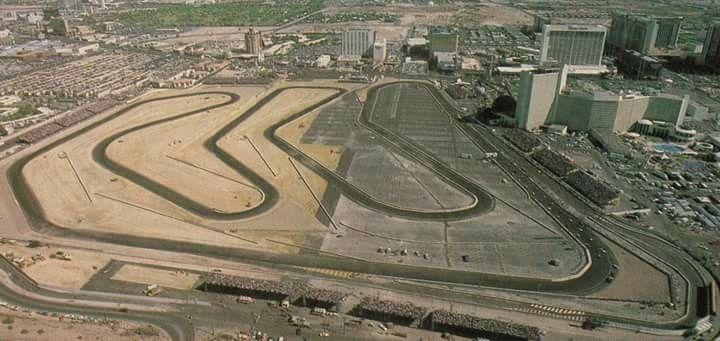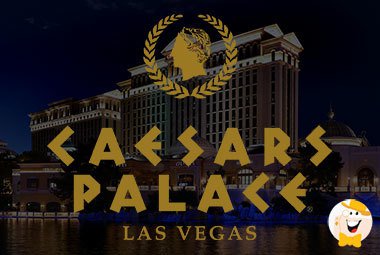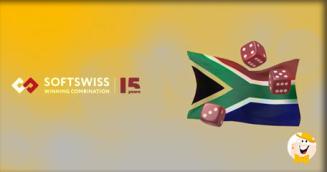![Formula One: Two Grands Prix at Vegas Casino Parking Lot [Grow Old, Know When to Hold and When to Fold]](https://a1.lcb.org/system/modules/news_story/images/attachments/000/308/363/original/caesars_palace_car_park.jpg)
The impulsion igniting players and drivers is similar to magnetism that attracts or repulses charged elements: the fundamental interaction is defined by the type of matter that experiences the force, the relative strength and effective range of energy, as well as the nature of particles that mediate it.
Physics know such might either as gravitation, electromagnetic force, a nuclear fusion that fuels even the Sun, or power that binds subatomic bits into protons and neutrons.
People sometimes recognize equally unquestionable inducement in relationships, friendships, partnerships, noble causes or business endeavors they believe in, and by default in unconditional love.
To elite casino players and Formula One drivers, though — the matter, strength, range, and nature of such force have a bit different origin, purpose, meaning, and outcome.
It is intrinsic, relentless, easy to find and hard to obtain, tantalizing and beautiful, mesmerizing and ruthless, silent in exaltation of a win, deafening in silence of loss, shining as the phosphorous torch lit in the pitch-black dark yet sometimes blinding, untamed, self-destructive, even violent, but always earned and owned equally through serenity and struggle known only to those capable to nurture such force within.
Observed through these lenses…
Gambling and the supreme class of car racing are quite similar.
The player observes the spinning wheel hoping the ball hits the right pocket; the driver holds the steering wheel trying to hit the apex at the right angle.
The racer and the patron brake as late as possible, hit the throttle as early as they can — igniting the combustion of fuel and the air in the engine, or lighting up the credit lines and bankrolls — as they try to read the vanishing point after which they no longer see the road ahead, and strive to remain unexposed as long as they’re able to.
Then, they do it all over again.
The power of dynamics can result in a symphony or cacophony, perfection or profligacy, fame or infamy, and on rare occasions, life or death.
The polarity of the outcome is absolute like plus or minus in an electric device, like fans in cotton T-shirts and nylon shorts are opposite to onlookers in prêt-à-porter suits and haute couture dresses.
The patron and the racer are in charge of only a fraction of the result — the driver can do everything right and yet again the race can go wrong, the player can be below mediocre and still get a jackpot — because the ultimate force of luck and chances bends physics and choices any day of the week and twice on Sunday.
Therefore…
Deep down, true ambitions and hopes of elite gamblers and Formula One drivers are the same — not so much to win and gain fortune, glamour, fame, or any other transient grail, but to grow old, to know when to hold, and to learn when to fold.
Everything else comes second.
The adrenaline rush, the sounds, the crowds, stunning girls and attractive participants, cocktails of trepidation, opulence, and electrifying eccentricities, the edges of limits, the smells, the saturation of all senses, split-second’s decisions and clinical precision of execution with imperturbable knowledge, intelligence, responsibility, resilience, and frantic pendulums of calculated risks, analytics, technology, mathematical possibilities — including the spraying champagne at the end.
Wheels of gambling and Formula One, gamblers and racers — heralds of human inveterate need to play and compete at large — go way back together.
They’ve met for the first time in the early Eighties, at two Grand Prix races staged on a parking lot of the Caesars Palace casino in Las Vegas.
Reminiscent of a couple that briefly connected before the college and reacquainted later in life, these two are today intertwined through a multi-million dollar sponsorship and data rights deal which merged in-race and sports betting with gambling partners and Grand Prix racing.
From Car Park to Racetrack
Somewhere around 1980, when Bernie Ecclestone initially pitched Grand Prix race to people at Caesars Palace and the city fathers — they turned him down.

The business concept was sound: Formula One was supersport with a global television audience that could entice big spenders — coming to see racing — to end up in casinos, while Las Vegas wanted to shake off the Mafia ghosts from the past and to stimulate the local economy.
But, there was no guarantee it might happen.
Besides, the United States already had one race in 1981 FIA Formula One Championship calendar — Long Beach Street Circuit in Los Angeles, the opening event of season reserved for March just 350 miles west of Las Vegas.
Thus, the idea was left to marinade until the opportune moment.
In May 1981, the organizers of the last Grand Prix in the season — Watkins Glenn, at the southern tip of Seneca Lake in New York — were unable to fulfill their financial obligations towards FIA and the race was dropped from the calendar.
Las Vegas came as the obvious choice for mandatory replacement track since the whole Formula One entourage was to be in Montreal, Canada, right after the penultimate race held at Île Notre-Dame Circuit — dash across the states away.
The Caesars Palace Grand Prix was born.
The race was held on October 17, at the casino’s parking lot on a prefabricated cement-side track, not the asphalt. The 14-corner racetrack in the shape of the coiled snake was laid out at the car park initially constructed to host several thousand patrons’ vehicles. Three-foot high side barriers were molded out of the concrete with almost no sense of reference points.
The racetrack was 2.268 miles long. Over 75 laps, the whole distance of the course was 170 miles.
The direction of the race was counter-clockwise — in Formula One, it’s always clockwise — which put enormous strain on drivers’ necks: they called it “Las Vegas neck,” to describe the extremes of centrifugal force.
The whole space was way too small. The makeshift pit lane could barely accommodate all cars which were left in the open air since there was no place for garage facilities. Mechanics were virtually pivoting on coins to work on cars.
Then, there was the heat. On the day of the race, the temperature was 74°F — without taking the temperature of engines and exhaust pipes into consideration.
On the flip side, the racetrack was made wide as possible which enabled overtaking. The short distances between the corners put classic V8 engines of Ford — which supplied ten teams at the time — on par with emerging turbo engines of Ferrari and Renault which were dominant on other circuits.
As only fate could make it, the Caesars Grand Prix would not only be the final race of the calendar but the one to decide the World Drivers’ Championship — both in 1981, and 1982.

1981 Caesars Palace Grand Prix
Coming to Sin City, Carlos Reutemann, an enigmatic Argentinean driving for Williams Ford, held a one-point lead over Nelson Piquet, the Brazilian behind the Brabham-Ford wheel and the general classifications’ runner-up in 1980.
After the qualifications, Reutemann was the favorite.
He drove the champion’s car — his team-mate Alan Jones won the world title the previous year — and had the pole position. At the start grid, both Williams’ cars were in the first row, Piquet was fourth.
Knowing that he only needed to finish the race in front of Piquet and win his first title, Reutemann was rather relaxed talking to the press at the swimming pool of the Caesars Palace where all teams were booked.
But…
The race itself turned out to be a horror for him.
Jones quickly took the lead after the start and never relinquished it. Reutemann was passed by Gilles Villeneuve — father of Jacques Villeneuve, to this day the only Canadian to ever win the Formula One World Championship — as well as Alan Prost and Bruno Giacomelli.
By the end of the first lap, Reutemann was fifth. By the end of the second lap, he lost fourth gear in Williams’ gearbox.
The crucial moment happened in lap 17 when Piquet overtook Reutemann, followed by Mario Andretti. Subdued Argentinean finished the race in 8th position, trailing one lap behind Jones who won the Grand Prix.
Piquet finished in 5th place. It was enough to overtake Reutemann in general classification for a single point and win the Championship. Brazilian had to be helped to get out of his car and puked in his helmet during the race — so much about disorientation and strain.
Other than racing…
Drivers enjoyed in hotel amenities, mirrored ceilings above their beds, and — gambling.
In a documentary movie by Australian broadcaster Clive Jones, Alan Jones admitted he lost $1,500 on the casino tables.
In his biography written by Susan Watkins, Ecclestone explains he handed over “a large paper bag full of $100 bills” to settle his gambling losses during the 1981 Las Vegas Grand Prix.
Remembering the whole episode, Mario Andretti says that many drivers gambled, with downs in the vicinity of $25,000 to $30,000. "The ones that lost would never admit it, only the ones that won a few dollars would brag about it," he adds.
Talk about knowing when to hold and when to fold.
Speaking of growing old…
Seven months later, Gilles Villeneuve died during qualifications for the Belgian Grand Prix at Zolder. He was 32 years of age. To this day, Villeneuve is arguably the most special driver ever (and this comes from a deep devotee of Senna and Schumacher).
Enzo Ferrari once wrote about Gilles, “I was affectionate to him.” He never expressed such emotion toward any other driver. Villeneuve’s death troubled Enzo so deeply that he kept Gilles’ photo portrait in all of his homes and offices, and never attended another Grand Prix.
1982 Caesars Palace Grand Prix
The second edition of the parking lot race in Las Vegas was held on September 25, on the same track and length as the previous one.
This year, instead of Jones, Mario Andretti was in line for retirement after the season.
The championship was again at stake.
Keke Rosberg, driving for Williams, had a nine-point lead over John Watson behind the wheel of McLaren. Both teams used a Ford V8 non-turbo engine. The permutations were simple — Rosberg would win the title if he finished within the first six and if Watson was the second, while Watson needed to win the race with Rosberg finishing without points.
At the starting grid, Rosberg was sixth, Watson held the ninth position.
The race itself turned out to be a war of attrition.
Prost and René Arnoux, driving Renaults, led for the most part before the latter was forced to retire due to engine problems while Prost’s tires picked up the dirt causing vibrations and slid to the fourth position.
Watson did the best he could but was not able to finish above the second place, behind Michele Alboretto.
Rosberg finished fifth and took the Championship title.
Out of 24 drivers that started the race, only 13 crossed the finish line. Likes of Niki Lauda, Andretti, Piquet, Arnoux, Nigel Mansell, Ricardo Patrese, Jacques Laffite, and Elio de Angelis were all forced to retire at some point.
Now…
There is not much information available regarding gambling proclivities of drivers during the second Las Vegas Grand Prix. It would be fair to assume there was some, but all of it might be well within the saying that what happens in Sin City stays there.
What is known, though, is that after the 1982 edition, the Formula One dropped Las Vegas from the calendar.
Only 30,000 people showed in both races as searing heat turned down visitors from sitting on provisional bleachers all day long. Gray, concrete backdrop of the racetrack, devoid of grass, in addition to confined space, provided for dull television broadcast.
Drivers hated the racetrack, nicknamed Mickey Mouse, which required enormous physical efforts. Teams were not keen to visit again either: heavy braking points after ultra-fast straights resulted in the myriad of breakages, gearbox failures, and engine troubles. During the two Grands Prix, 32 drivers were forced to retire.
In business terms, it seemed that the endeavors did not pan out as Ecclestone, the Caesars Palace executives, and Las Vegas hoped for.
Or, perhaps it was just too early?

Refresh and Reload
The efforts to reinstate Las Vegas Grand Prix began in 2016. The idea was to have a street race which would involve the Strip, Bellagio, and Caesars Palace, with a Chinese conglomerate willing to commit close to $146 million to greenlight the event.
It was meant to be another Monaco but it did not pass further than initial consultation.
Regardless…
The year turned out to be seminal since it marked the takeover of Formula One by the U.S. giant Liberty Media in an $8 billion transaction.
Two years later, when the SCOTUS decision shifted the gambling gear into fundamental overdrive, to no surprise, Formula One and casinos got reacquainted — this time in the form of sports betting and sportsbooks.
In what seems to be a business steal, marketing agency Interregional Sports Group (ISG) secured a $100 million five-year deal with Liberty Media. Naturally, ISG paid the whole amount up front and got to subcontract other betting companies around the world.
Today, the deal includes advertising on electronic boards during the races, live odds and in-race betting, with the majority of renowned operators and affiliates providing for spectacular opportunities in sports wagering
The development is a major U-turn compared to Ecclestone’s position on betting — he was a long-time opponent, just as was Garry Bettman, the commissioner of NHL that reversed his views rather quickly once he realized potentials of legalized and well-regulated gambling.
With the iGaming industry revolution and technology driving its thriving success, Formula One is nowadays yet another playing field for worldwide sports bettors although very little is the same as it was forty years ago.
What remains the same, though, are ambitions and hopes that ignite players and drivers.
They are the same as those of all lovers, best friends, ideal business partners, visionary politicians, even writers and readers capable to recognize the force similar to magnetism which attracts or repulse charged particles.
To grow old, to know when to hold, and to learn when to fold.
Therefore, put your safety harnesses on, fasten your helmets, and always drive the same way you gamble — safely and responsibly, particularly on full throttle.





